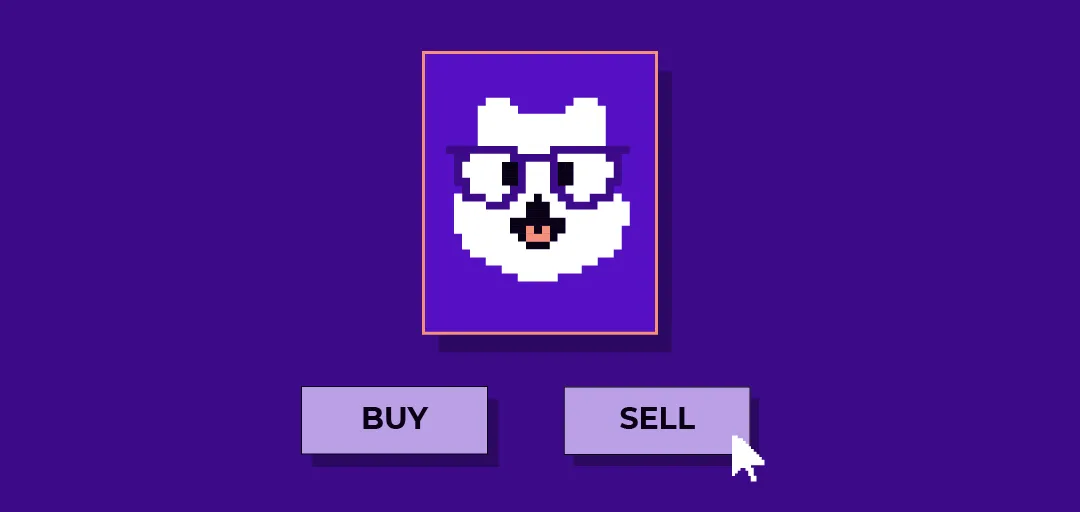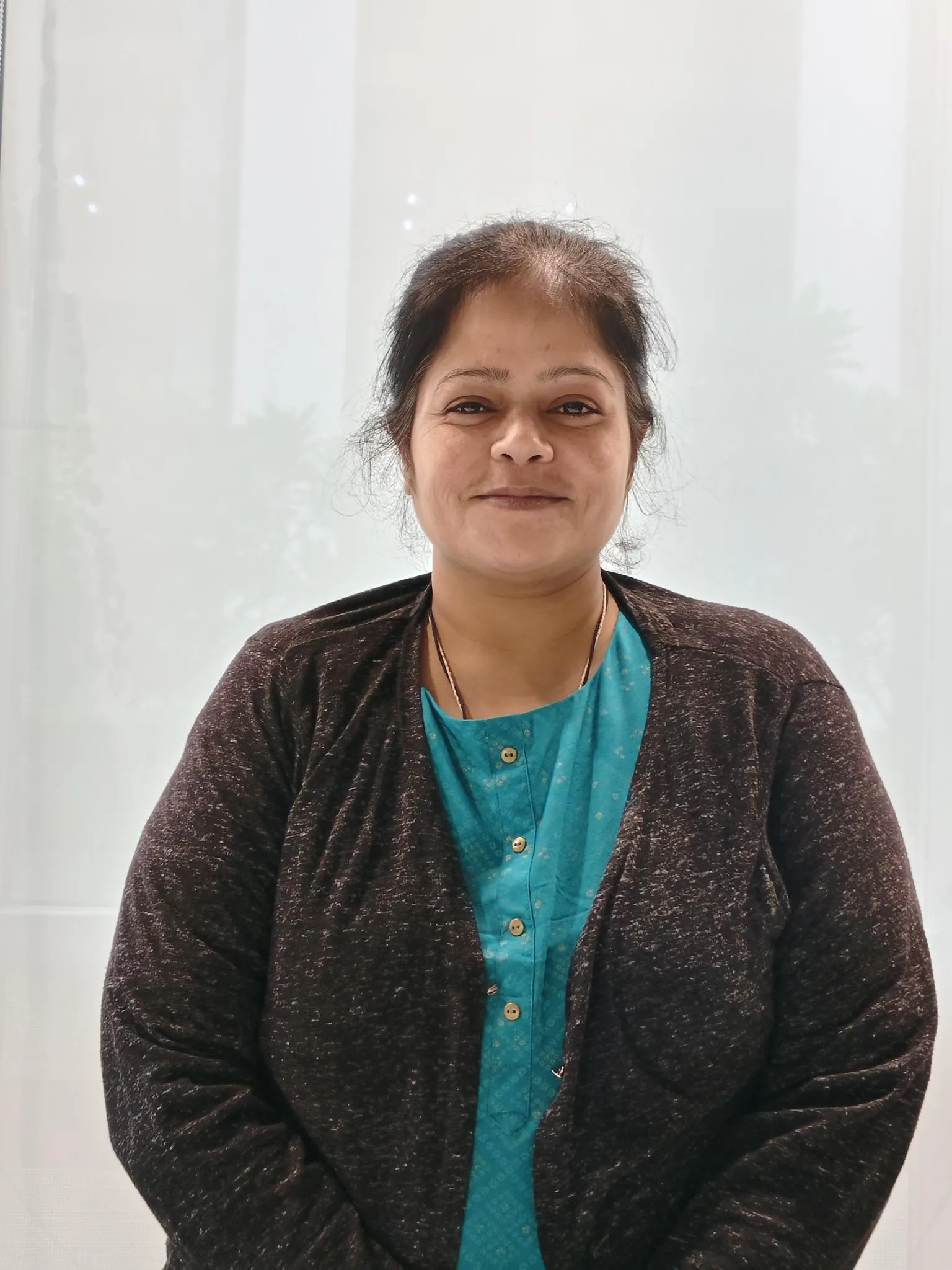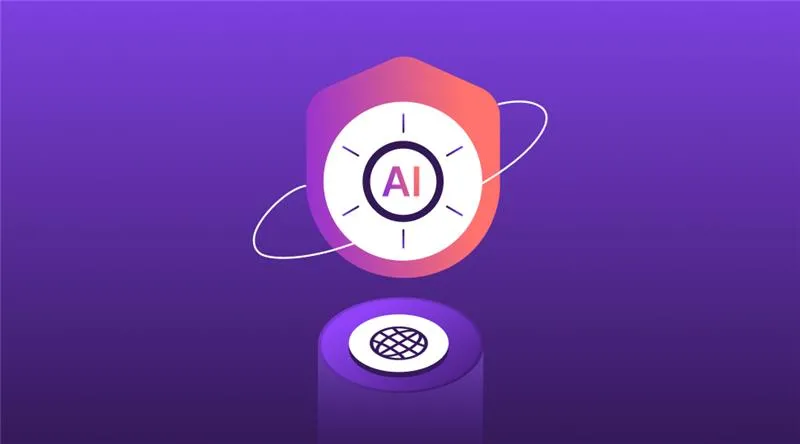Technology

6 min

Explore how to mint your Non-Fungible Tokens (NFTs). Get a step-by-step guide on creating, marketing, and selling your first NFT. Discover the tools, platforms, and resources needed to get started.

By Digvijay Singh Tomar
03 Mar, 2022
The admiration and the extensive popularity of non-fungible tokens (NFTs) have gained substantial momentum recently. It has put the world of digital art and collectibles by storm.
You have probably heard of Mike Winkelmann, a.k.a. Beeble, an American digital artist who sold his NFT piece (a collage of digital images) and made USD 69 million at an auction. And there is similar news of an artwork sold at Christie's auction house (the first example of an NFT artwork) for USD 131,250. All of it shows what NFTs (non-fungible tokens) can do to our lives.
And if you are searching for ways to create an NFT and begin trading?
You're at the right spot.
But NFTs are much more than just digital artwork and stories of people who made millions and billions out of this new trade.
This blog will briefly discuss the NFTs and how they work - from the basics to the advanced and from creating an NFT to selling it. It will also help you get a clear idea of this booming industry growing on the internet.
Let's dive in by answering the most critical question -
First, NFT stands for Non-Fungible Token . Here, non-fungible refers to some entity that cannot be exchanged or interchanged. And by its definition, an NFT is an authentication certificate or a digital asset (or non-interchangeable data stored on a blockchain) representing the objects in the real world. And by Token, we mean the interchangeable item. These items are You can trade the ones online, such as art, cars, music, collectibles, videos, in-game items, GIFs, etc., provided all such things are unique.
For example , years of the old tweet can be an NFT, too, like Jack Dorsey (the former CEO of Twitter) used his tweet as an NFT and made millions of US dollars.
Now, if you carefully read the above paragraph, you'll find that an NFT is a digital asset stored on the blockchain. And for your information, not any blockchain, but Ethereum, because it provides the utmost security to your NFT.
But why the Blockchain and not any other means of Technology?
For the same reasons - it provides a secure ledger for its trade and preserves its uniqueness. And blockchain is the only technology that can do it safely, making it easy for anyone to buy and sell NFTs.
Remember, each token's value may increase or decrease since it depends on the growth of the NFT market.
Again, making it easy for you to understand, a simple example of a non- fungible item can be a picture of a signed dollar (using unique color ink for the signature).
Furthermore, there are a few defining features of an NFT that you can follow:

It's a digital era, and an NFT's purpose is simple - maintaining all digital assets' uniqueness and authenticity through rightful ownership.
To understand better, consider an example -
Suppose you have a $1000 bill. You know you can swap it for two equal denominations, say $500 bills, or exchange it for something, say for your friend's $1000 bill. It prompts you that currency notes or bills are a fungible asset since they are interchangeable. On the other hand, non-fungible assets are the ones that you can smoothly exchange.
For instance, when you create an NFT, it will be unique. Unlike cryptocurrencies, no one can replace them with another token.
Hence, are NFTs like cryptocurrencies?
No!, not exactly!
Because, in experts' views, NFTs are those digital assets that are transferable and secured by a digital ledger based on blockchain technology called Ethereum or any other Crypto per se.
And Cryptocurrencies are most secure and highly protected by blockchain technology.
Remember, Cryptocurrencies are fungible assets.
Blockchain is a digital ledger or a system that tracks digital information using ultimate security. Neither you nor anyone can hack, change or cheat on such a system that stores all transactional details of your digital assets such as Cryptos, NFTs, etc., within a well-established network of thousands of computers connected worldwide.
NFTs are based on blockchain technology to verify the authenticity and ownership of each digital asset. And a blockchain development company makes it easy to have the right to ownership of an NFT, fixed in a blockchain and making it highly secure, so nobody can even think of interfering.
Moreover, it allows you to manage the ownership of your NFTs using a unique ID that only exists for your asset. So, whenever one creates an NFT, the relevant details get stored in the blockchain.
Developing or creating a new block (a block is a location where data is stored and encrypted).
Now, let’s get back to NFT business. Based on the concept of blockchain,
There are two basic steps to create an NFT -
A few examples of NFTs or things that can be NFTs -
As mentioned earlier, each NFT is unique and comes with a set of unique properties -
Note : You can trade NFTs only via a blockchain-based NFT market because blockchain (a decentralized database or unchangeable digital ledger) provides speedy and secure transactions.
NFTs relevancy comes from the fact that they allow you to tokenize digital assets - from artwork to real estate, i.e., make money out of anything that can be transformed into an NFT and start trading to make a ton of money just like that! However, it's difficult as being said. And in this world, there is a saying; things move quickly in the crypto-world.
Currently, most digital assets stand a chance to get copied or replicated. As a result, organizations using NFTs are expanding their base to create unique digital assets with authentic ownership. No two NFTs will be the same, bringing tremendous opportunities for every kind of business or niche.
For example, in-app music streaming services like Spotify, Apple Music, or Amazon Music could make playlists of famous artists and sell them to their fans.
Today, the ultimate challenge concerning NFTs is to have authentic ownership of a digital asset. And once it gets resolved, you can easily prove your ownership over a digital asset. It will also eliminate the copy/paste problem.
You can use NFTs to -
Prediction;- there is a possibility that banks may allow NFTs as collateral for disbursing loans!
Let’s get to know what minting is in NFT’s terminology before jumping into creating one.
Minting an NFT refers to turning a digital file or asset into an NFT (i.e., making a digital file unique using available means and tools) on the Ethereum or similar blockchain. This NFT is stored on a decentralized database, making it possible to edit, modify, or delete. Yes! You can do it.
Now, back to creating an NFT. Creating and selling an NFT isn't a piece of cake. And it's not just selling your favorite pet's photo as an NFT, be very clear about it. There are many YouTube videos to know the same, but all it boils down to - how to do it?
So, let’s better understand an NFT and know how to spin your head around it.
If you observe technically, there seem to be many ways to trade any digital file as an NFT. And similar to the other things in the market, there must be some facilitators/regulators to run trading and the whole NFT marketplace smoothly. Right? And also, if you have thought about selling your NFT using a marketplace like “ OpenSea,” you will encounter limitations to the file formats they support.
As mentioned before, people mostly use Ethereum to trade NFTs online, so when you create an NFT and want to sell it for an increased price, you will need to use the Ethereum service while paying a gas (transaction) fee. This fee can vary depending on your needs. Whatever you do with the blockchain - from minting to trading NFTs - will cost you a gas fee!
*Remember, just paying a gas fee doesn't entitle you to that transfer will occur. And you won't get back your gas fee even if your transfer fails. But, in most cases, it will. So, worry a little!
Finally, let’s discuss the step-by-step process to list your NFT on an online marketplace:
Thorough research would better understand available marketplaces online and allow you to find a valid one to sell your NFT. However, there are only a few marketplaces that use different blockchains. So it won't take much of your time.
List of Top NFT marketplaces and the type of blockchain they use -
Note: Rarible and OpenSea use the lazy minting system, i.e., creating NFTs on such marketplaces without even losing your penny!
But wait! What is lazy minting anyway?
It is a way to create an NFT and put it on the online marketplace for its sale instead of writing it on a blockchain. It saves gas fees! That's cool! Right?
And now, out of curiosity, you may have a question - how much do these platforms charge?
Well! Here's the deal -
You only need to pay the gas and transfer fees when you buys your NFT. That is, pay the gas fee only when you close a deal! Once that's done, your NFT gets written on the desired blockchain.
However, be aware of the initial charges from OpenSea for novice users. And when you have listed your first ever NFT on OpenSea, you will be charged USD 200-USD 400 for initializing your account. It is a one-time fee, so you need not worry!
A crypto wallet is like a bank account that helps you store your NFTs and crypto assets that you create or buy. Besides holding your private keys, a crypto wallet keeps your crypto assets safe and accessible. Such wallets can be both physical and digital.
For example, Coinbase - is a digital wallet with a ledger resembling a USB stick.
Now, you might think - How does a crypto wallet work?
Simple. Foremost, a crypto wallet never stores your crypto assets written on a blockchain. What it does .” keep your private keys [say, passwords] to help you access your crypto assets. It’s like the working principle of bitcoins, NFTs, etc. Such private keys in your digital wallet authenticate your crypto asset ownership.
Again, remember your digital wallet must be compatible with the blockchain you are using.
For example, you won't be allowed to use an Ethereum-based wallet to buy a Wax blockchain-based NFT.
Here are some most popular crypto wallets:
Once you finish the second step, it's time to connect your crypto wallet to the desired marketplace.
For instance, if you're selling or would want to sell your NFT on OpenSea, kindly visit their website and click create. It will redirect you to a new tab containing a list of all popular crypto wallets compatible with OpenSea. Once you have figured it all out, choose the crypto wallet you wish to connect with your OpenSea account. And that's it! Your crypto wallet gets plugged into the OpenSea marketplace for NFT trading.
Finally, let's get to the core part - creating your NFT. If done cleverly, it can change your life overnight, just like Beeble and other NFT traders. Although, the odds might not always favor you!
So, to create an NFT on OpenSea, you can follow the following steps -
Once you have created your first ever NFT for trade, then comes the next part, You need to decide the price of your NFT so you can sell it.
There are three basic strategies to set a price tag for your NFT:
Once you have decided on the price tag, select the suitable currency to receive for your NFT.
Post that, you can release the content to the buyer. The content could be anything - from a Thank You Note to an Invitation to your private Discord channel if both parties agree to further the deal!
You know what minting is - turning your idea (digital art, etc.) into a digital asset called an NFT so you can associate a price tag with it and sell it. And for this, initiate a digital wallet - Ethereum wallet and do a transaction. You can do it all using OpenSea , it will charge a gas fee to initialize your account. So if you're a novice user, you will need to pay for minting your NFT, else no need!
Once you've finished working on your pricing strategy for your NFT, go ahead and list your NFT for sale on OpenSea by clicking the Complete Listing button.
Note: You can only list your NFT after signing a few transactions using your crypto wallet. Once it's over, you will see a screen announcing your NFT is now listed for sale.
In experts' views all around the globe, listing an NFT on OpenSea can cost you USD 200 - USD 450 if you're a first-timer. It may seem high since this includes the gas fee you pay to record your NFT on a blockchain. This fee may vary from time to time, and you can check it out using a few popular gas fee trackers to get the info for the live gas fee on different marketplaces.
Let's ask a simple question - are NFTs worth all the hype or just another fad? Maybe or maybe not! That's because, on the one hand, quite a significant number of NFT traders are making billions of dollars, and on the other hand, it's tough to make the first NFT and sell it for even a thousand bucks.
No doubt, with many creators and businesses joining the bandwagon and cashing in on such digital assets, NFT is here to stay.
Along with that, the NFTs' sales are skyrocketing. Sales are up from around USD 41 million in 2018 to a jaw-dropping USD 44 billion and more in 2021. As an entrepreneur, investing in NFTs as a creator or service provider in this industry would be best.
And if you have a fantastic idea that you would like to implement and make a fortune, our team at Quokka Labs would be happy to assist you in making your vision a reality. Contact us and get your Free Consultation Now!
Generative AI for Product Design - Turning Ideas into Interactive Prototypes
By Dhruv Joshi
5 min read
Most Popular Web App Frameworks for Building Scalable Apps
By Sannidhya Sharma
5 min read
Web App Development Languages - Which Stack Fits Your Business Needs
By Dhruv Joshi
5 min read
How to Develop a Web App: Step-by-Step Guide from Idea to Launch
By Sannidhya Sharma
5 min read

Technology

7 min
Generative AI is moving fast into enterprises, from banks to hospitals to government agencies. Adoption is rapid, but security planning lags. Unlike traditional systems, these models can be exploited through prompt injection, poisoned data, or manipulated to leak sensitive information. They are also misused for phishing, deepfakes, and malicious code.


Technology

7 min
AI-powered Web Application Firewalls (WAFs) go beyond static rules by using machine learning, anomaly detection, and predictive analysis to block zero-day threats, reduce false positives, and protect APIs at scale. Unlike traditional WAFs, they self-learn, adapt in real time, and cut operational costs while improving compliance and trust.


Technology

5 min
AI is redefining mobile app security by transforming how threats are detected, tested, and prevented. From continuous monitoring and fraud detection to compliance with regulations, AI ensures apps remain resilient against modern risks. This means safer apps, protected users, and stronger businesses. Investing in AI-driven security today builds trust, drives growth, and secures long-term competitive advantage.


Feeling lost!! Book a slot and get answers to all your industry-relevant doubts